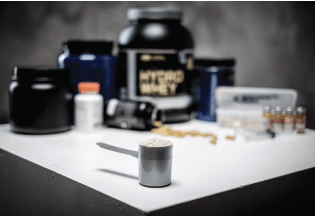Your Future Fitness Starts Here
What gets measured, gets managed. Know the five key fitness performance indicators.
Do you want to get into the best shape of your life in 2023? Let’s take a data-driven approach to that objective and get a jump on everybody who’s waiting until Jan. 1 to get started.
There’s a saying in the business world that “what gets measured, gets managed.” In other words, whatever you track and record is what you ultimately prioritize.
Without knowing your situation, it’s impossible to give you a perfectly customized protocol for getting into shape. But if you start with these suggestions for handling five key performance indicators (KPI), you’ll build a firm foundation—one you can adjust later.
Macronutrients
Most people have no idea how much they’re eating or how that food is broken down into its parts: protein, carbohydrates and fats. If you’re serious about getting into shape, you can’t leave nutrition to chance.
Instead, track everything you eat. Start by consuming 1 gram per pound of bodyweight in protein, 60 to 70 grams of fats and the remainder in carbohydrates to reach a daily caloric intake of 12 times your body weight. When your progress slows (see Fighting Fat), start pulling 5% to 10% from carbs and fats for the week
and reassess.
Resistance training
Very simple—lift weights three to five times a week. Do eight to 12 working sets per muscle group per week, with six to 15 reps per set. If you like training with heavier weights, lower the number of reps per set. With lighter weights, increase the reps per set.
Or, if you’re knocking on death’s door like I am (age 41), just do whatever your joints will allow.
The important thing is that you’re consistent and put some oomph into your sets. So, ensure every working set approaches at least three to four reps from failure.
Activity
If you like cardio, do it. If you don’t like it, don’t do it. It doesn’t matter.
The important thing is that your body is moving, so keep it simple and just track your daily steps. Start with an easy goal: 5,000 steps per day. Work your way up to 5,500, then 6,000, then 7,000, then 8,000.
Hydration and sleep
Drink half your body weight in ounces of water per day—minimum. Not only will you feel amazing and alert, but all the calories you’ll burn after running to the toilet every 45 minutes will shave at least a week off your total dieting time.
Sleep seven to eight hours a night—minimum. Yeah, I know, you’re the busiest person the world has ever known. I don’t care. Do it.
Each week, you should lose about 0.5% of your body weight, on average. The progress will not be linear, with big losses in the early weeks and little progress at the end. If you stall for a week, don’t change anything. If you stall for two weeks, start cutting your fuel sources (carbs/fats).
It’s tempting to try to go faster but don’t. In the same way a rubber band builds tension as you stretch it, the harder you push with your calories, training and activity, the greater the potential snapback. You can undo weeks of progress in one late-night pizza bender.
There you go. The plan is set. Now, all that’s left is to do the work.
Fighting fat?
Break it down This Way
Calories are simply units of energy, and each component of a calorie commands its own caloric demands. Protein is 4 calories per gram, carbohydrates are 4 calories per gram and fats are 9
calories per gram.
Determine your caloric intake needs by multiplying your body weight by 10-12 if you’re looking to get leaner, or 13-15 if you’re looking to get bigger.
So, if you’re 200 pounds and want to get slimmer, your daily caloric needs would be between 2,000 (200 x 10) and 2,400 (200 x 12).
Working with 2,400 calories, you would determine your individual macro targets
as follows:
Two hundred pounds at 1 gram per pound of bodyweight in protein = 200 grams protein, which would be 800 calories (200 grams x 4/cals per gram).
Let’s say you target 60 grams of fats, which would be 540 calories (60 grams x 9/cals
per gram).
That leaves 2,400 – 800 – 540 = 1,060 calories to allocate to carbohydrates.
At 4 cals/gram for carbs, that would be 1,060/4, or 265 grams of carbs.
Jim Schultz, Ph.D., a derivatives trader, fitness expert, owner of livefcubed.com and the daily host of From Theory to Practice on the tastytrade network, was named North American Natural Bodybuilding Federation’s 2017 Novice Bodybuilding Champion. @jschultzf3







